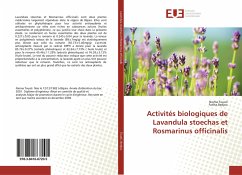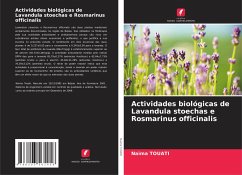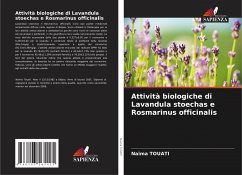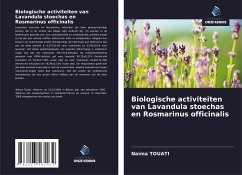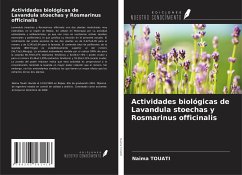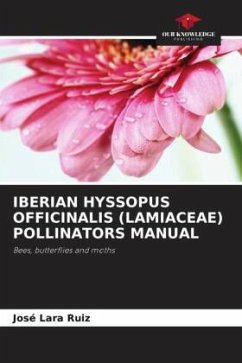
Biological activities of Lavandula stoechas and Rosmarinus officinalis
Versandkostenfrei!
Versandfertig in 6-10 Tagen
36,99 €
inkl. MwSt.

PAYBACK Punkte
18 °P sammeln!
Lavandula stoechas and Rosmarinus officinalis are two medicinal plants widely spread in the region of Bejaia. They are used in phytotherapy for their antioxidant and antibacterial activity because they are rich in active substances (essential oils and polyphenols), which justifies their choice in the present study. The essential oil yield of both plants was 0.227±0.05 for rosemary and 0.245±0.04 for lavender. The total polyphenol content of lavender (89±7mg/g) is statistically higher than that of rosemary (56.73±5.46mg/g). The antioxidant activity measured by DPPH radical gave for lavender...
Lavandula stoechas and Rosmarinus officinalis are two medicinal plants widely spread in the region of Bejaia. They are used in phytotherapy for their antioxidant and antibacterial activity because they are rich in active substances (essential oils and polyphenols), which justifies their choice in the present study. The essential oil yield of both plants was 0.227±0.05 for rosemary and 0.245±0.04 for lavender. The total polyphenol content of lavender (89±7mg/g) is statistically higher than that of rosemary (56.73±5.46mg/g). The antioxidant activity measured by DPPH radical gave for lavender 85.79±0.27% (phenolic extracts) and 62.64±7.73% ( crude oil) and for rosemary 45.46±11.29% (phenolic extracts) and 76.39±3.12% (crude oil). The reducing power test indicates that this activity is proportional to the concentration, lavender having a higher reducing power than rosemary. However, it is the synthetic antioxidants that have a greater effect than the extracts of the two plants.



